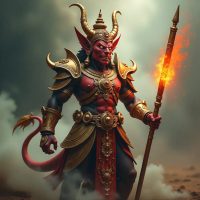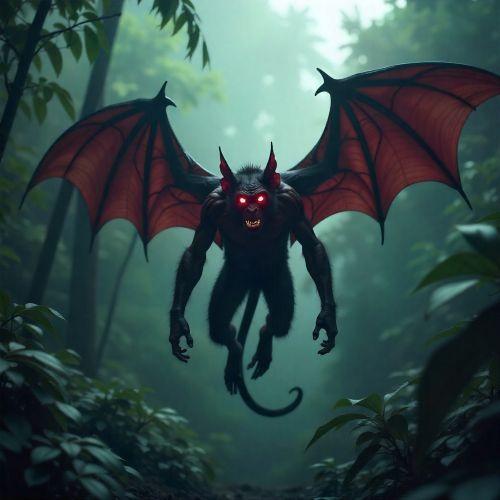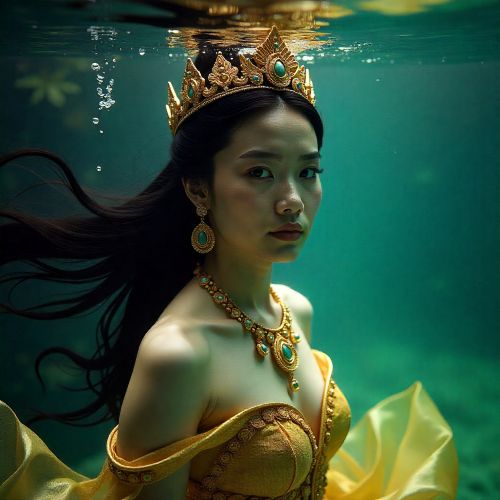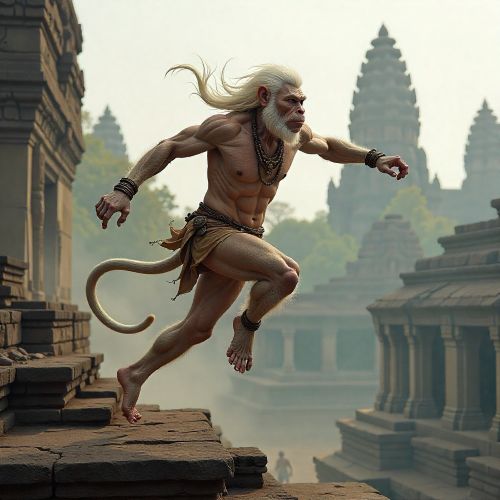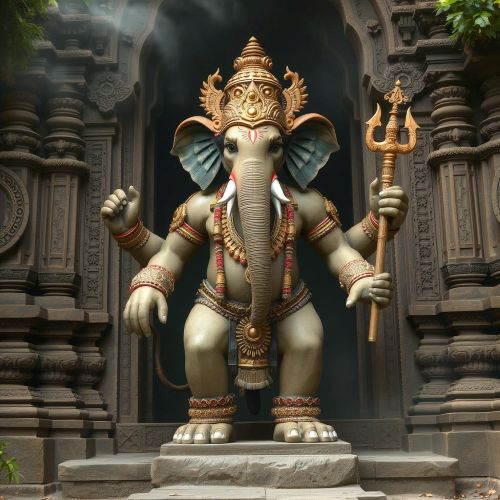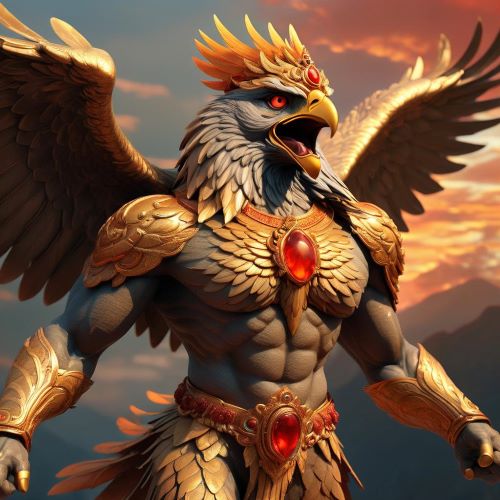Mahachompoo : The Rose-Skinned Warrior of Cambodia’s Reamker Epic
Listen
At a glance
| Description | |
|---|---|
| Origin | Cambodian Mythology |
| Classification | Hybrids |
| Family Members | N/A |
| Region | Cambodia |
| Associated With | Strength, Warrior |
Mahachompoo
Introduction
Mahachompoo stands as one of the compelling yet lesser-known figures in Cambodian mythology, appearing prominently in the Reamker, the Khmer adaptation of the Indian Ramayana. While many characters in Southeast Asian retellings follow closely from their Sanskrit origins, Mahachompoo is uniquely developed within Cambodian tradition, where he becomes a powerful general fighting under the demon king Reap (Ravana). His presence enriches the Reamker’s moral and emotional landscape, where themes of loyalty, duty, and noble conflict frequently dominate the narrative.
In Khmer literature, masked dance, and temple murals, Mahachompoo emerges as more than a mere antagonist. He represents the weight of unwavering loyalty and the tragic dignity of a warrior bound by his oath. His narrative continues to resonate in Cambodian culture, blending mythic grandeur with human emotion and serving as a reminder of the sophisticated storytelling embedded within Khmer mythology.
Physical Traits
Mahachompoo’s physical appearance is a striking embodiment of strength and supernatural power. Classical Khmer murals and Lakhon Khol performances typically depict him as a towering giant with a radiant reddish-pink complexion—an attribute that connects directly to his name, which roughly translates to “Great Pink” or “Great Rose-Hued One.” His skin tone distinguishes him from other demon warriors and symbolizes intensity, vitality, and martial prowess.
His body is muscular and imposing, adorned with ornate golden armor that reflects the elaborate artistic style of Khmer royal iconography. He is shown wearing a high ceremonial headdress and often wields a heavy mace or spear, weapons associated with high-ranking warriors in the Reamker. His facial features—bulging eyes, sharpened fangs, and a dignified yet fearsome expression—identify him as a yaksha or demon warrior. Despite this ferocity, the stylized gestures used in dance portrayals emphasize restraint and nobility, hinting at the moral complexity of his character.
Family
Mahachompoo does not belong to the divine lineage of characters like Preah Ream (Rama) or the monkey generals who accompany him. Instead, he is firmly rooted in the ranks of Reap’s elite warriors, often described as a high-ranking general or noble within the demon kingdom.
Some oral traditions portray Mahachompoo as a relative of powerful warriors such as Indrajit, though this varies across regions and performance troupes. What remains consistent is his unwavering allegiance to Reap. His loyalty forms the emotional core of his character—he fights not out of malice but out of duty, making him a tragic figure whose devotion ultimately leads to his downfall. This dynamic reflects a recurring theme in the Reamker: even those on the “wrong” side may possess honor, discipline, and courage worthy of admiration.
Other names
Though best known as Mahachompoo, the character appears under several variant names and titles across Cambodian folklore and artistic traditions. In some sources, he is linked to the Sanskrit-influenced name Mahachamasa, which appears in certain non-Cambodian Ramayana variants. Within local performance culture, he may be referred to as Chompoo Yak, an informal name used among Lakhon Khol performers. Literary retellings sometimes elevate him with the honorific title Preah Mahachompoo, emphasizing the respect accorded to him within the narrative despite his role as an antagonist. These variations highlight the fluid nature of oral storytelling in Cambodia and the creative adaptations that keep mythological characters culturally relevant.
Powers and Abilities
Mahachompoo is endowed with immense supernatural strength, a trait that places him among the most formidable warriors in the Reamker. He is described as capable of lifting massive objects, breaking through enemy formations, and overpowering even seasoned divine fighters. His skill with weapons—especially the mace and spear—is emphasized in both literature and dramatic portrayals.
In several narrative versions, Mahachompoo is resistant to common divine weapons, a trait that forces Preah Ream and his allies to employ strategy rather than brute force to defeat him. Some traditions also attribute illusionary powers to him, allowing him to confuse or disorient opponents on the battlefield. Beyond physical strength and magical resilience, Mahachompoo is recognized for his tactical mind. He leads large armies of demon warriors and is frequently portrayed as a strategist whose battlefield decisions significantly heighten the conflict within the Reamker. His powers serve not only as elements of spectacle but also as symbolic representations of disciplined loyalty and the tragic cost of unwavering devotion.
Modern Day Influence
Mahachompoo continues to hold a place in Cambodian cultural expression. In the Lakhon Khol masked dance tradition, he remains a prominent role characterized by precise, powerful choreography. His battles with Preah Ream and Hanuman are core scenes in many traditional repertoires.
Temple murals at sites such as Wat Bo and the Silver Pagoda depict Mahachompoo in dynamic battle scenes, preserving his image as a symbol of martial valor. Modern school editions of the Reamker include his character to illustrate the depth of the epic’s moral complexity.
In contemporary interpretations, Mahachompoo is often presented as a symbol of noble tragedy—a powerful reminder that righteousness and loyalty can exist even among adversaries. His story reflects Cambodia’s respect for characters who embody honor and discipline, regardless of their narrative alignment.
Related Images
Source
Cambodia in Transition: Family, Culture and the New World. (n.d.). University of Technology Sydney. https://opus.cloud1.lib.uts.edu.au/bitstream/10453/116689/2/02whole.pdf
Khmer Mythical Creatures – Mythical Encyclopedia. (2024, January 3). https://mythicalencyclopedia.com/khmer-mythical-creatures/
The Many Hindu Gods of Khmer Kings. Scribd. https://www.scribd.com/document/688435189/The-Many-Hindu-Gods-of-Khmer-Kings
The Place of Animism within Popular Buddhism in Cambodia. (2021, December 9). https://angkordatabase.asia/publications/the-place-of-animism-within-popular-buddhism-in-cambodia-the-example-of-the-monastery
Narayana Murthy, U. (2022). Ramayana of Cambodia: Reamker [PowerPoint slides]. Center for Indic Diaspora Studies. https://cid-ds.org/wp-content/uploads/2022/10/2BC-RAMAYANA-OF-CAMBODIA-REAMKER-Dr-Uma-Narayana-Murthy-Literature.pdf
Wikipedia contributors. (2025). Reamker. Wikipedia. https://en.wikipedia.org/wiki/Reamker
Wonders of Cambodia. (2025). Characters of the Reamker: Preah Ream. https://wondersofcambodia.com/characters-of-the-reamker-preah-ream/
Sam, A. (2010). The Reamker: A Cambodian Ramayana. Phnom Penh: Buddhist Institute Publishing.
Frequently Asked Questions
Who is Mahachompoo in Cambodian mythology?
Mahachompoo is a powerful demon general in the Reamker, the Khmer adaptation of the Ramayana, known for his strength and unwavering loyalty to Reap.
Why is Mahachompoo depicted with a pink or crimson complexion?
His rose-red complexion symbolizes power, vitality, and supernatural energy, and is linked directly to the meaning of his name.
What powers does Mahachompoo possess?
He is known for immense physical strength, mastery of weapons, magical endurance, and tactical intelligence on the battlefield.
Does Mahachompoo appear in Indian versions of the Ramayana?
A loosely related figure named Mahachamasa exists in some variants, but Mahachompoo’s character is uniquely expanded in the Cambodian Reamker.
How is Mahachompoo represented in modern Cambodian culture?
He appears in masked dance, temple murals, literature, and educational retellings, symbolizing noble loyalty and martial skill.


